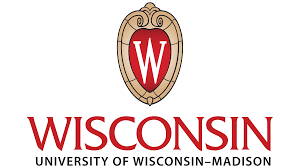How to Apply for the University of Wisconsin (UW) Admission Guide 2025
Applying to the University of Wisconsin (UW) can feel like a big leap — there are multiple campuses, application routes, deadlines, and special rules for domestic, transfer and international students.
This guide walks you, step-by-step, through everything you need to know to apply for admission in 2025 (freshman, transfer, and a short primer for graduate applicants). It’s practical, up-to-date, and written so you can follow a clear checklist from “ready to apply” to “accepted and enrolled.”
Quick orientation — which “University of Wisconsin” do you mean?
When people say “University of Wisconsin” they may mean:
-
UW–Madison (the flagship campus) — most selective, has its own admissions pages and a few campus-specific requirements (e.g., a required letter of recommendation).
-
Other UW campuses (UW–Milwaukee, UW–Eau Claire, UW–La Crosse, UW–Platteville, etc.) — many use the Universities of Wisconsin system application (apply.wisconsin.edu) and have slightly different policies, deadlines, and tuition/fees.
This guide highlights UW–Madison where campus-specific details matter, and also explains the general UW System application pathway that most other campuses use.
The official UW system application portal and guidance pages are the authoritative places to submit your application and find campus-specific deadlines.
Decide program & campus, and mark your calendar
-
Choose the campus and program/major. UW–Madison offers many majors and sometimes has program-level admission (e.g., some engineering or arts majors). Other UW campuses have their own majors and admission criteria.
-
Check deadlines now. Deadlines differ by campus and term. For example, UW–Madison posts specific deadlines (early action and regular decision dates) and other campuses post their own timelines — check the campus admissions deadlines page for the exact dates for Fall 2025 or Spring 2026 before you start. Missing a deadline is the most common avoidable error.
Pick the correct application portal
-
UW–Madison applicants should follow the UW–Madison application instructions (online application) on their admissions site.
-
Most other UW campuses accept the Universities of Wisconsin system application at apply.wisconsin.edu. Some UW campuses (and some programs) also accept or require the Common Application — check the campus page before you start. Use the system portal to apply to one or multiple UW campuses.
Know the cost to apply & fee waivers
-
As of current guidance, UW–Madison’s undergraduate application fee is $80 (non-refundable). Other UW campuses may have different fees or no fee.
The UW System provides fee-waivers or a way to self-report financial hardship on the application if you cannot pay. Always confirm the exact fee when you start the application, and request a waiver if needed.
Gather required documents (freshman applicants)
Prepare these so you can upload or arrange official submission:
-
Official high school transcript — with courses and grades through the most recent term. If still in high school, submit a current transcript and follow up with a final transcript after graduation.
-
Test scores (optional for many campuses): Many UW campuses (including UW–Madison for the near term) are test-optional — you are not required to submit SAT/ACT scores for admission and will not be disadvantaged if you omit them; submit them only if they strengthen your application. Check campus-specific test policies before deciding.
-
Letter of recommendation(s): Most UW campuses do not require recommendations — UW–Madison does require one academic letter for freshman applicants. Other campuses may encourage but not require them. If the campus requires or accepts letters, ask a teacher or counselor who knows your academic work.
-
Personal statement / essays: Some campuses/programs require personal statement(s) or short-answer prompts. Even where optional, a clear and focused essay can help.
-
Supplemental materials (if applicable): Portfolios or auditions for arts programs, math/CS competitions for specialized majors, or program-specific materials.
-
Proof of English proficiency (international applicants): TOEFL, IELTS, or equivalent — required unless exempt by prior English-medium instruction. Typical UW thresholds (varies by campus) are around TOEFL iBT 78–80 or IELTS overall 6.0–6.5 (check your campus).
Transfer applicants: what’s different
-
Credit minimum: Many UW campuses expect at least 12–24 transferable semester credits for transfer admission; some majors or campuses require more. UW–Madison often considers transfer GPA (e.g., they may require a competitive GPA and evaluate last 60 credits).
-
Guaranteed transfer pathways: Wisconsin has transfer agreements/guarantees between some two-year colleges and UW campuses — complete required credits and GPA criteria and you may be guaranteed admission to certain campuses/programs. If you’re planning to transfer, review the UW Guaranteed Transfer info.
-
Transcripts & course descriptions: Provide official college transcripts and, for coursework taken outside the U.S., course descriptions or syllabi if requested.
International applicants: visas, finances, and English tests
International applicants must pay special attention to:
-
English proficiency — TOEFL/IELTS/PTE minimums vary by campus/program (common minimums: TOEFL iBT ~78–80, IELTS 6.0–6.5). Submit official test reports to the campus. admissions.wisc.edu
-
Financial documentation — accepted international students receive an I-20 only after proving sufficient funds for tuition, fees, and living expenses. Each campus provides instructions on acceptable bank statements and sponsor documentation.
-
Visa timeline — plan 2–3 months (or more) for I-20 processing and visa interview scheduling; apply for your F-1 visa promptly after receiving your I-20.
-
Credential evaluation & translations — transcripts not in English may need certified translations; some campuses require foreign credentials evaluation.
Fill out the application carefully
-
Create your account on the chosen portal (Apply.Wisconsin or UW–Madison’s application).
-
Complete biographical & academic sections exactly — school names, addresses, dates, and course titles should match your official records.
-
Upload unofficial transcripts while applying if the portal allows; arrange for official transcripts to be sent when requested.
-
Ask recommenders early if a letter is required (UW–Madison recommends one academic letter). Provide them a resume, your school counselor’s notes, and specific points you’d like highlighted.
-
Proofread your essays and have a teacher/counselor review them (not rewrite). Personal, specific examples beat generic statements.
After you submit: tracking & follow-up
-
Confirm receipt. You should get an application confirmation and a checklist in your applicant portal.
-
Send official documents (final high school transcript, test reports, international documents) as requested. UW has dedicated instructions on how to send official materials; follow them precisely.
-
Check your portal regularly for messages from admissions; some campuses request additional info or updates.
-
Decisions and deposits. Note the date decisions are released (campus deadlines pages) and deposit deadlines if accepted. admissions.wisc.edu
Financial aid & scholarships
-
FAFSA — U.S. citizens and eligible residents must complete the FAFSA by campus deadlines to be considered for federal aid and campus-based aid. Each UW campus posts its specific FAFSA code.
-
Institutional scholarships — many campuses offer merit and need-based scholarships; some require separate scholarship applications or earlier deadlines — check the campus scholarship pages.
-
International students — most federal aid is not available; look for campus scholarships for international students and external funding. Also be prepared to show funds for the I-20.
Common mistakes to avoid
-
Missing campus-specific deadlines. (Always verify the deadline on the campus page.)
-
Uploading unofficial documents but failing to send official transcripts when asked.
-
Waiting to request recommendation letters until the last minute (UW–Madison requires one).
-
Not confirming English proficiency or exemptions early enough (international applicants).
Timeline sample for Fall 2025 applicants (general)
-
August (prior year): Applications open for most UW campuses (system apps generally open August 1). Start your application early.
-
September–November: Finalize essays, ask for recommendations, submit application (Early Action deadlines typically fall in November for campuses that offer EA).
-
December–January: Regular decision deadlines for many campuses (check your campus). Submit any remaining official documents.
-
February–April: Decisions are released for many campuses; admitted students submit deposits to hold their place.
Always check the exact calendar for the campus and year you’re applying to; dates can change.
Graduate applicants (brief overview)
Graduate admissions are handled through each graduate school (e.g., UW–Madison Graduate School). Typical requirements: online application, statement of purpose, CV, official transcripts, letters of recommendation (usually 2–3), test scores if required by program (e.g., GRE in limited cases), and program-specific materials.
The graduate application fee is commonly $75 (varies by campus/program). See the UW–Madison Graduate School apply page for program-level instructions.
Useful official resources (start here)
-
Apply to a UW campus (Universities of Wisconsin application portal) — apply.wisconsin.edu. Use this to apply to many UW campuses.
-
UW–Madison Admissions — deadlines & required materials (campus-specific): check the UW–Madison admissions website for deadlines and required documents.
-
UW test-optional policy & FAQs — official campus test policy pages explain whether SAT/ACT are optional and how to decide.
-
International & English proficiency guidance — official pages list TOEFL/IELTS/PTE minimums and codes.
Final tips — stand out the right way
-
Lead with strong academics + course rigor. UW admissions emphasize academic performance and the rigor of your high school curriculum.
-
Tell a clear story in your essay. Show growth, curiosity, and specific reasons the campus/program fits you.
-
Use recommenders wisely. One strong academic recommender beats several generic ones — UW–Madison requires one; other campuses value them if you’re on the borderline.
-
Prepare for finances early — domestic students: FAFSA; internationals: bank statements for I-20.
-
Ask admissions staff questions — campus admissions offices are used to helping prospective students; use their contact/virtual chat tools if you’re uncertain.
Short FAQ
Q: Do I have to submit SAT/ACT for Fall 2025?
A: Many UW campuses (including UW–Madison for the current near-term policy) are test-optional — you may submit scores if they strengthen your file, but you will not be penalized for omitting them. Check your campus page for the exact test policy.
Q: Does UW–Madison require recommendations?
A: Yes — UW–Madison requires one academic letter of recommendation from a teacher, counselor, or faculty member for freshman applicants. Other UW campuses usually do not require recommendation letters but may accept or encourage them.
Q: Where do I send official transcripts?
A: Follow the campus-specific instructions in your applicant portal. The UW admissions site has a page explaining how to send official documents for each campus.
Closing — breathe, plan, and start now
Applying to the University of Wisconsin is a process you can control — with timeline planning, careful document collection, and a clear application strategy you’ll maximize your chance of success.
Start early, use the official apply.wisconsin.edu or UW–Madison admissions pages for your campus, and keep a checklist so nothing slips through the cracks. Good luck — and if you want, tell me which exact campus and program you’re applying to and I’ll tailor a one-page, deadline-specific checklist for your application.










